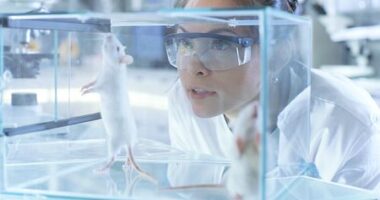Fauna Bio and Novo Nordisk Focus on Genes Involved in Hibernation to Find Therapies for Obesity

Fauna Bio and Novo Nordisk are collaborating to find novel treatments for obesity by studying the genes and pathways that increase metabolism in hibernating mammals.
The purpose of this joint research is to understand the cellular physiology of hibernating animals in periods when they are metabolically active.
Over hibernation, mammals lower their metabolism to 1%–3% of normal levels while reducing their body temperature, which allows them to enter a state known as torpor.
Yet, over the six to nine months of hibernation, these animals wake up sporadically every one to three weeks.
These intermittent arousals are metabolically challenging as mammals quickly return to normal body temperature and regular metabolism from the near-freezing body temperatures of hibernation.
Understanding how hibernating mammals survive these periods may shed light on specific genes, proteins, and signaling networks involved in these metabolic switches. Importantly, it may also hold the key to treating obesity and metabolic disorders.
A recent study, “Genetic variation drives seasonal onset of hibernation in the 13-lined ground squirrel,” tied genetics to hibernation — particularly in ground squirrels. The study’s first author was Katharine Grabek, PhD, co-founder and chief scientific officer of Fauna Bio.
The results, which were published in Nature Communications Biology, showed that 14 spots in the animals’ genome were associated with starting hibernation. The researchers hope to use such findings to more closely understand the relationship between animal biology and health.
Studies of hibernation have also focused on obesity. Recent research has identified more than 300 potential master genetic switches that control obesity in hibernating animals. These genetic sequences were located in more than 100 obesity susceptibility genes.
“Novo Nordisk has a great team of scientists with depth of expertise in metabolism and obesity,” Ashley Zehnder, CEO of Fauna Bio, said in a press release.
“This collaboration allows us to leverage their expertise to quickly test candidates in validated assays as well as demonstrate the strength of our comparative genomics approach to drug discovery,” she added. “In the longer horizon, the collaboration could potentially result in novel treatments of obesity to the benefit of patients for whom limited or inadequate treatments exist today.”
Under the terms of the agreement, Fauna Bio — which says it has developed the largest hibernation biobank coupled with next-generation genetic sequencing — will get an upfront payment as well as support for research. In turn, Novo Nordisk obtained an exclusive option to licence potential treatment targets.
“Having a chance to engage with Fauna Bio represents an exciting and significant step in understanding the basis of energy homeostasis in an extreme physiological setting,” said Mads Tang-Christensen, Novo Nordisk’s corporate vice president of obesity research.
“Our partnership brings together experts from a variety of fields at a time when rapid advancements in bioinformatics and genomics can be applied to the untapped potential of unique animal models,” he added.




